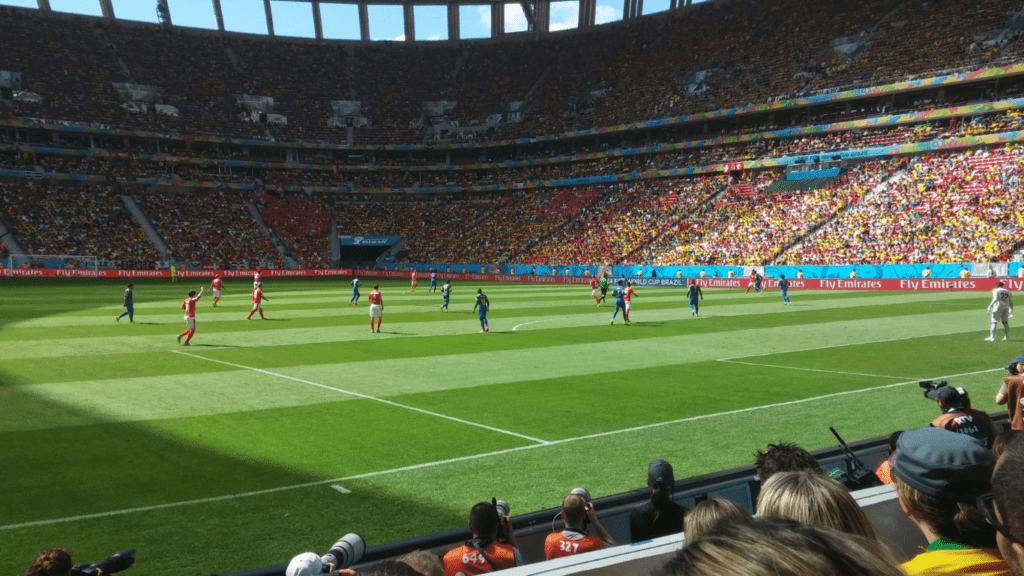As a passionate soccer enthusiast, I’ve witnessed firsthand the dynamic shifts in tactics that have reshaped the beautiful game. Modern coaches are not just strategists; they are innovators pushing the boundaries of traditional playstyles. The evolution of soccer tactics is a fascinating journey that reflects the ever-changing landscape of the sport.
From the legendary Total Football of the past to the intricate pressing schemes of today, the evolution of soccer tactics showcases the adaptability and creativity of coaches worldwide. With a keen eye on maximizing player potential and exploiting opponent weaknesses, modern tactics have transformed the way we perceive and play the game. Join me as we delve into the realm of soccer tactics, where innovation meets tradition on the field of play.
Overview of Soccer Tactics Evolution
Exploring the evolution of soccer tactics reveals a dynamic landscape where innovation and tradition intersect. The shift from traditional playstyles like Total Football to cutting-edge pressing schemes exemplifies the adaptability of modern coaches. These tacticians constantly seek ways to maximize player potential and exploit opponent weaknesses, reshaping the very essence of the game. Soccer tactics have evolved to a point where creativity and strategic thinking are paramount, revolutionizing how the beautiful game is both perceived and played.
Influence of Modern Coaches
Soccer tactics have seen a significant transformation under the influence of modern coaches. From Tactical Innovations to Strategic Approaches, coaches have played a pivotal role in redefining the game. Let’s explore how these innovative minds have shaped the way soccer is played today.
- Tactical Innovations
I’ve witnessed a shift in tactical approaches, with modern coaches introducing new strategies to outsmart opponents. For example, pressing high up the pitch to regain possession quickly has become a common tactic employed by many top teams. This aggressive style of play not only disrupts the opposition’s buildup but also creates scoring opportunities. - Strategic Approaches
Strategic thinking has become paramount in modern soccer, with coaches meticulously planning their game approach to exploit opponent weaknesses. By analyzing data, studying the opposition, and adapting strategies based on the strengths of their own team, coaches are able to create comprehensive game plans that increase their chances of success. The strategic approaches implemented by modern coaches have elevated the game to new heights, emphasizing the importance of preparation and tactical flexibility.
The influence of modern coaches on soccer tactics cannot be overlooked. Their innovative ideas and strategic prowess have not only transformed the way the game is played but have also raised the bar for future generations of coaches and players.
Data Analysis and Performance Metrics
In analyzing the evolution of soccer tactics, I delve into the realm of data analysis and performance metrics. Soccer has progressively become a data-driven sport, with coaches relying on a multitude of metrics to optimize player performance and strategic decisions.
Player Tracking
Tracking player movements, distances covered, sprints made, and positional heatmaps provide coaches with valuable insights into player workload and positioning on the field. This data aids in designing training sessions tailored to individual player needs and optimizing tactical setups.
Passing Accuracy
Evaluating passing accuracy percentages, successful pass rates, and key pass statistics allows coaches to assess the effectiveness of their team’s passing game. By analyzing passing patterns and decision-making, coaches can refine strategies to enhance ball circulation and maintain possession.
Shots on Goal
Analyzing shots on goal, shot conversion rates, and shot placement helps coaches evaluate their team’s attacking efficiency. This data enables coaches to identify offensive strengths and weaknesses, leading to targeted training drills to improve scoring opportunities.
Defensive Performance
Assessing defensive metrics such as interceptions, tackles won, and aerial duels won provides insights into the team’s defensive solidity. Coaches can adjust defensive strategies based on these metrics, ensuring a robust defensive structure to thwart opposition attacks.
Set-Piece Efficiency
Monitoring set-piece efficiency, including goals scored from set-pieces, assists from dead-ball situations, and success rates in defending set-pieces, allows coaches to fine-tune set-piece routines. Analyzing set-piece data enhances a team’s ability to capitalize on scoring opportunities and minimize defensive vulnerabilities.
Data analysis and performance metrics offer coaches a comprehensive view of their team’s strengths and weaknesses, enabling them to make informed decisions that drive tactical innovation and player development in modern soccer.
Impact on Player Development
Expanding on the evolution of soccer tactics, I reflect on how modern approaches have revolutionized player development in the sport. Coaches’ emphasis on data analysis and performance metrics isn’t solely for strategic gains but also for enhancing individual player skills.
Analyzing player tracking data offers detailed insights into positioning, movement patterns, and work rate during matches. This information enables me to tailor training sessions to focus on improving specific aspects of a player’s performance, leading to overall enhancement on the field.
Furthermore, metrics such as passing accuracy and shots on goal statistics help me identify players’ strengths and weaknesses with precision. By leveraging this data, I can fine-tune training drills to sharpen passing abilities, shooting accuracy, and decision-making under pressure, fostering well-rounded players capable of excelling in various game scenarios.
Defensive performance metrics play a crucial role in shaping players’ tactical awareness and positioning off the ball. Through the analysis of defensive statistics like tackles won, interceptions, and successful duels, I can nurture defenders’ abilities to read the game, anticipate opponent movements, and execute effective defensive strategies.
Set-piece efficiency is another key aspect of player development influenced by modern tactics. By delving into set-piece statistics, including goals scored from set plays and conversion rates, I structure training sessions to optimize offensive and defensive set-piece routines. This focused approach ensures that players are well-prepared to capitalize on set-piece opportunities and minimize vulnerabilities in defensive set-piece situations.
The impact of modern coaching tactics on player development is profound, integrating data-driven insights to nurture individual skills, tactical acumen, and overall performance levels. By leveraging performance metrics effectively, coaches can maximize players’ potential, elevate their game intelligence, and contribute to the continuous evolution of soccer strategies and player development methodologies.



 Katherine White – Lead Promotions & Partnerships Manager
Katherine White, the Lead Promotions & Partnerships Manager, focuses on securing the best promotional offers and exclusive betting deals for Fortune Play Guide users. With a wealth of experience in marketing and strategic partnerships, Katherine ensures that bettors get the most value from their investments while staying up-to-date with the latest offers from top sportsbooks.
Katherine White – Lead Promotions & Partnerships Manager
Katherine White, the Lead Promotions & Partnerships Manager, focuses on securing the best promotional offers and exclusive betting deals for Fortune Play Guide users. With a wealth of experience in marketing and strategic partnerships, Katherine ensures that bettors get the most value from their investments while staying up-to-date with the latest offers from top sportsbooks.
